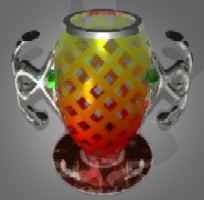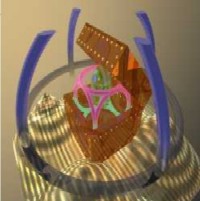Constructive Hypervolume Modeling


Pasko A., Adzhiev V., Schmitt B., Schlick C.,
Constructive Hypervolume Modeling, Graphical Models, special issue on Volume Modeling, vol. 63, No. 6, November 2001, pp. 413-442.
Electronic version: PDF (1.69 Mb)
See also:
Abstract
In this work, we consider modelling point sets with attributes. A point set in a geometric space of an arbitrary dimension is a geometric model of a real or abstract object/process under consideration. An attribute is a mathematical model of a real or abstract object property of arbitrary nature (material, photometric, physical, statistical, etc.) defined for any point of the point set.
We provide a survey of different modelling techniques related to point sets with attributes. This survey spans such different areas as solid modelling, heterogeneous objects modelling, scalar fields or “implicit” surface modelling, and volume graphics. Then, on the basis of this survey we formulate requirements to a general model of hypervolumes (multidimensional point sets with multiple attributes).
A general hypervolume model and its components such as objects, operations, and relations are introduced and discussed. A function representation (FRep) is used as the basic model for the point set geometry and attributes represented independently using real-valued scalar functions of several variables. Each function defining the geometry or an attribute is evaluated at the given point by a procedure traversing a constructive tree structure with primitives in the leaves and operations in the nodes of the tree. This reflects the constructive nature of the symmetric approach to modelling geometry and associated attributes in multidimensional space.
To demonstrate a particular application of the proposed general model, we consider in detail the problem of texturing, introduce a model of constructive hypervolume texture, and discuss its implementation. The well-known concept of solid texturing is extended in two directions: constructive modelling of space partitions for texturing and modelling of multidimensional textured objects. We implemented a special modelling language and software tools supporting the proposed general model. Several examples of modelling and rendering 3D, 4D (time-dependent), and multidimensional objects with constructive hypervolume textures are provided.